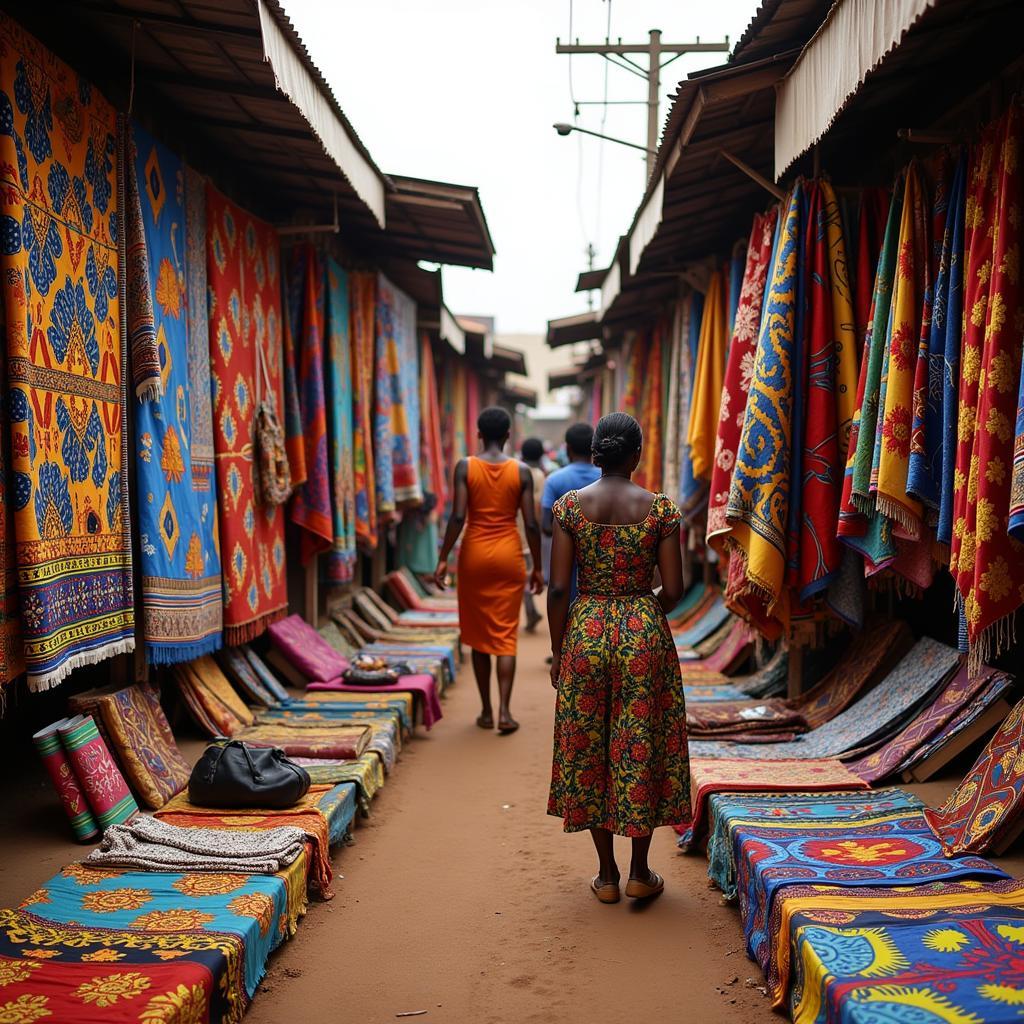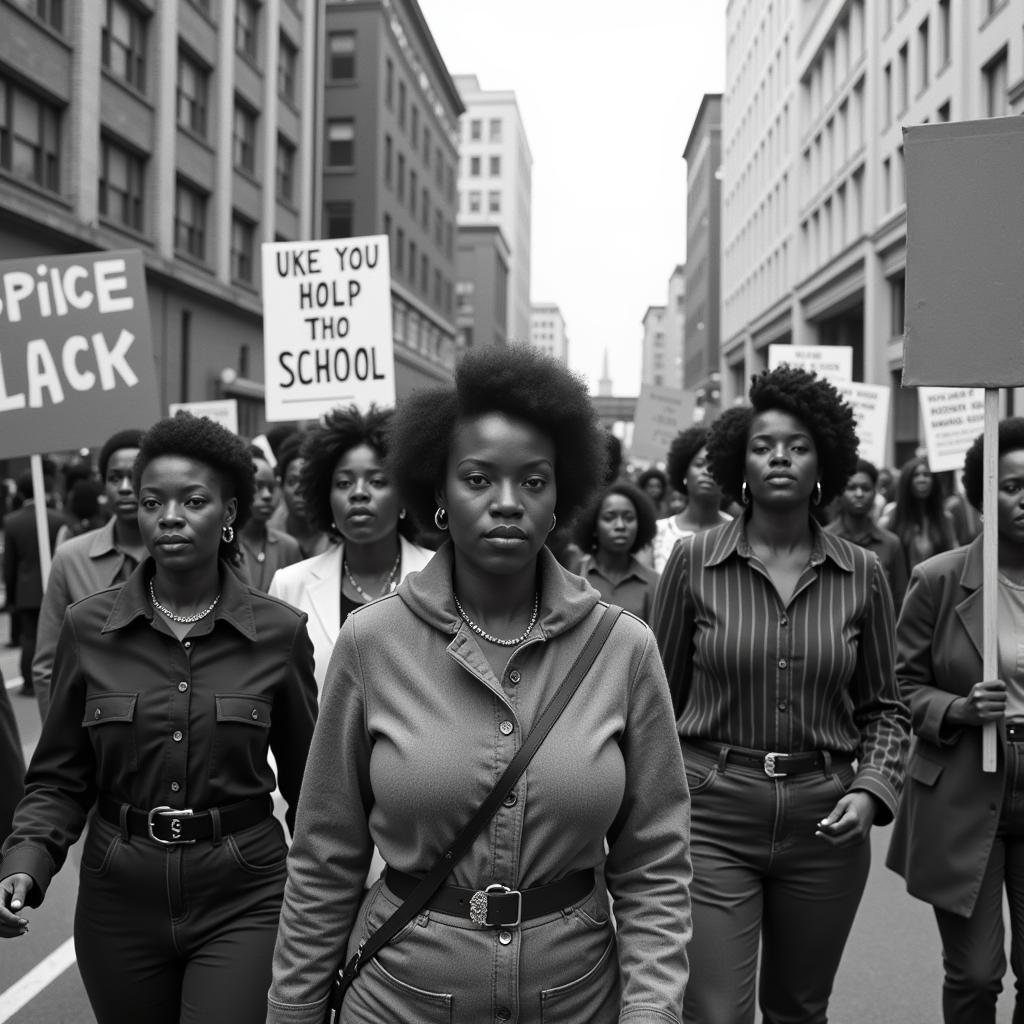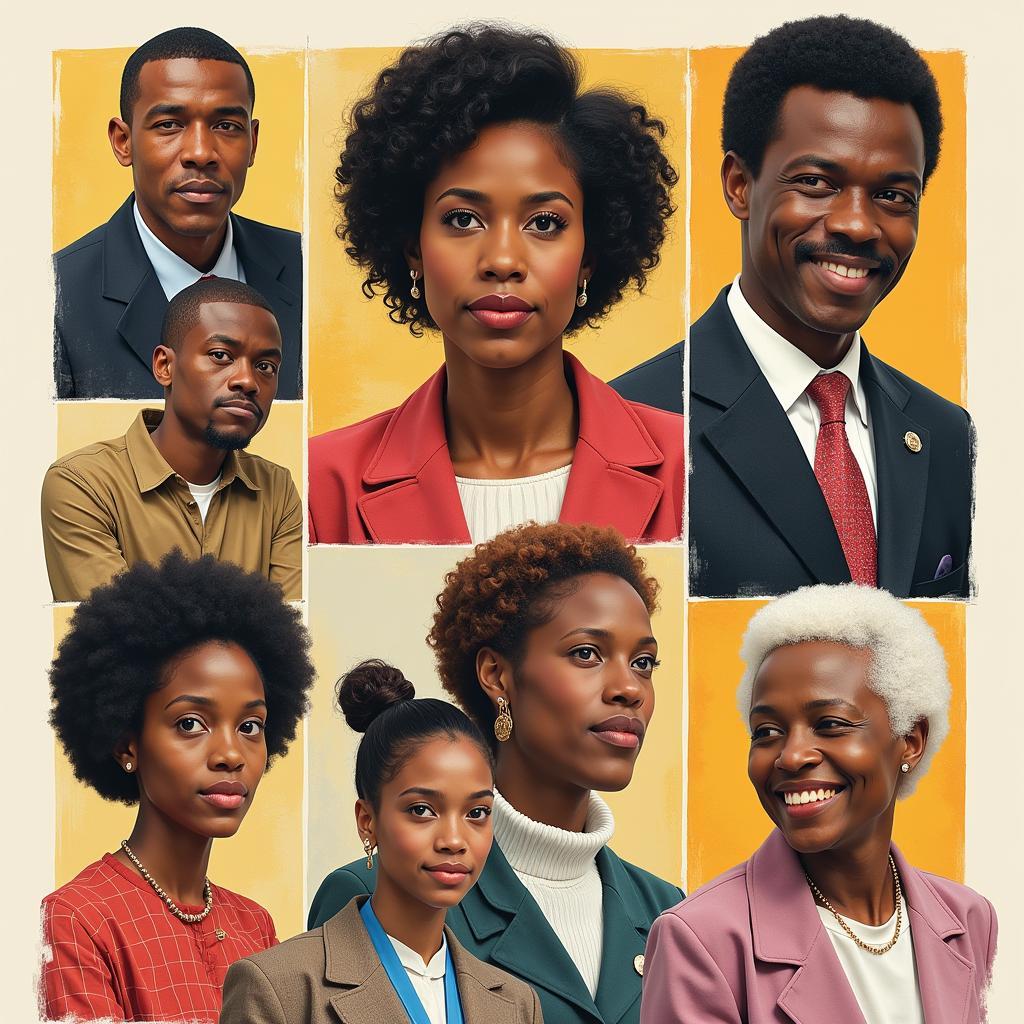African Hair Braiding Styles: A Journey Back to 2012
African hair braiding styles in 2012 showcased a vibrant mix of traditional techniques and modern influences. From intricate cornrows to bold box braids, these styles represented a celebration of cultural heritage and individual expression. This article delves into the popular African hair braiding styles of 2012, exploring their history, significance, and enduring appeal.
Remembering the Iconic Braids of 2012
2012 was a particularly interesting year for African hair braiding styles. We saw a resurgence of classic looks alongside innovative new interpretations. This era emphasized creativity, blending traditional African braiding techniques with contemporary trends. Whether it was the red carpet or everyday streets, braided hairstyles made a statement. From the intricate designs of micro braids to the chunky boldness of jumbo braids, 2012 offered a style for everyone. What were some of the key trends that defined African hair braiding styles in 2012? Let’s take a closer look.
Micro Braids, Tree Braids, and the Rise of Natural Hair
Micro braids, known for their intricate detail and versatility, were incredibly popular. They offered a low-maintenance yet stylish option, allowing for various updos and styling possibilities. Another popular choice was tree braiding, a technique where synthetic hair is gradually braided into natural hair, creating length and fullness. This method was favoured for its protective nature, minimizing manipulation and promoting healthy hair growth. The natural hair movement was also gaining significant momentum in 2012, influencing braiding styles and encouraging women to embrace their natural texture.
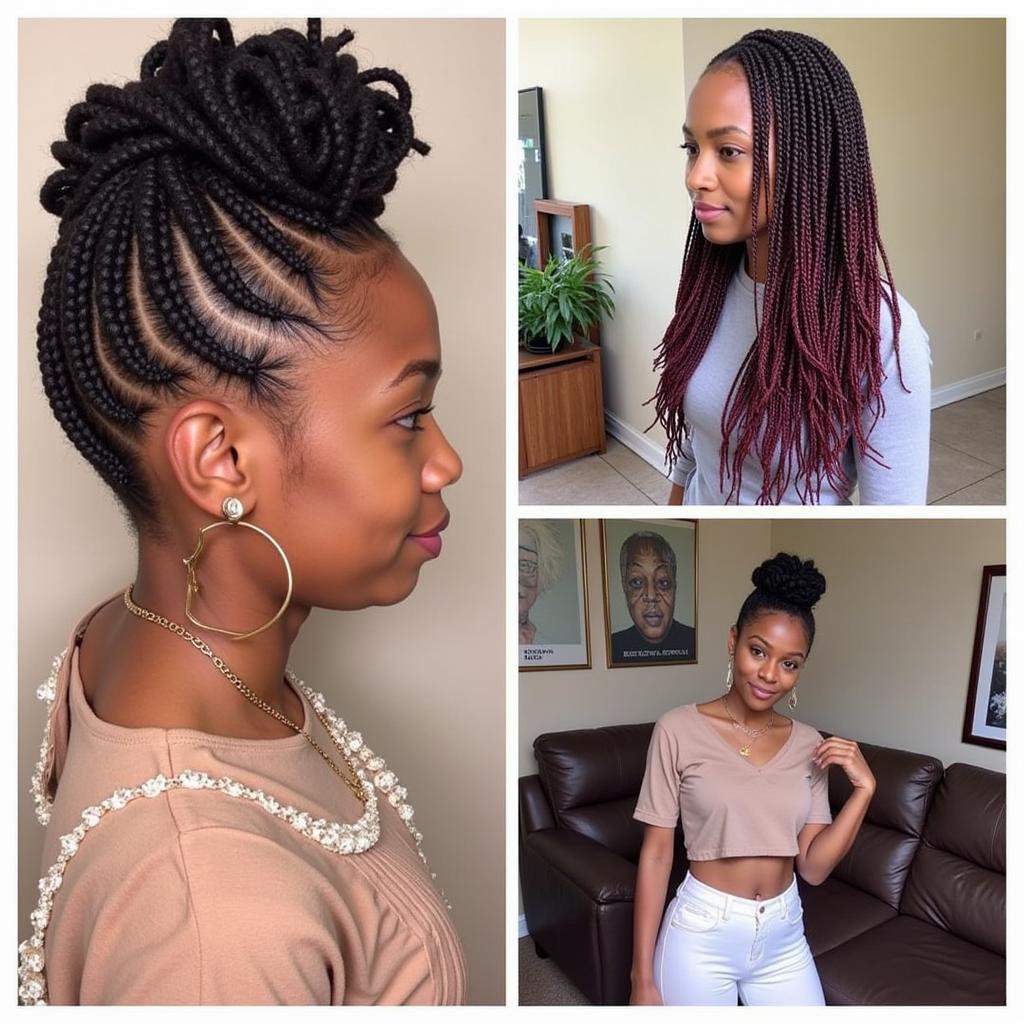 Micro Braids, Tree Braids, and Natural Hair in 2012
Micro Braids, Tree Braids, and Natural Hair in 2012
Cornrows: A Timeless Classic Reinvented
Cornrows, a cornerstone of African hair braiding, continued to reign supreme in 2012. From simple straight-back cornrows to more elaborate designs incorporating curves and patterns, the possibilities were endless. This traditional style, deeply rooted in African culture, offered both practicality and beauty. Cornrows could be adorned with beads, cuffs, or left bare for a minimalist aesthetic. Their versatility allowed for easy styling, making them ideal for both casual and formal occasions. The intricate patterns achievable with cornrows transformed them into wearable art, showcasing creativity and individuality.
The Cultural Significance of African Hair Braiding
African hair braiding is more than just a hairstyle; it’s a cultural art form passed down through generations. Each braid tells a story, reflecting individual identity, social status, and cultural heritage. These styles are not merely aesthetic choices but also represent a rich tapestry of tradition, community, and self-expression. In 2012, this cultural significance was particularly celebrated, with many individuals using braids to connect with their roots and express their pride in their African heritage.
Braiding: A Social Activity and Symbol of Community
The act of braiding itself is often a social event, bringing women together to share stories and build connections. This communal aspect of braiding strengthens social bonds and reinforces a sense of belonging. Braiding styles can also serve as markers of identity within specific communities or tribes, signifying lineage and shared traditions. This intricate language of braiding allows for nonverbal communication, conveying messages of cultural affiliation and personal expression.
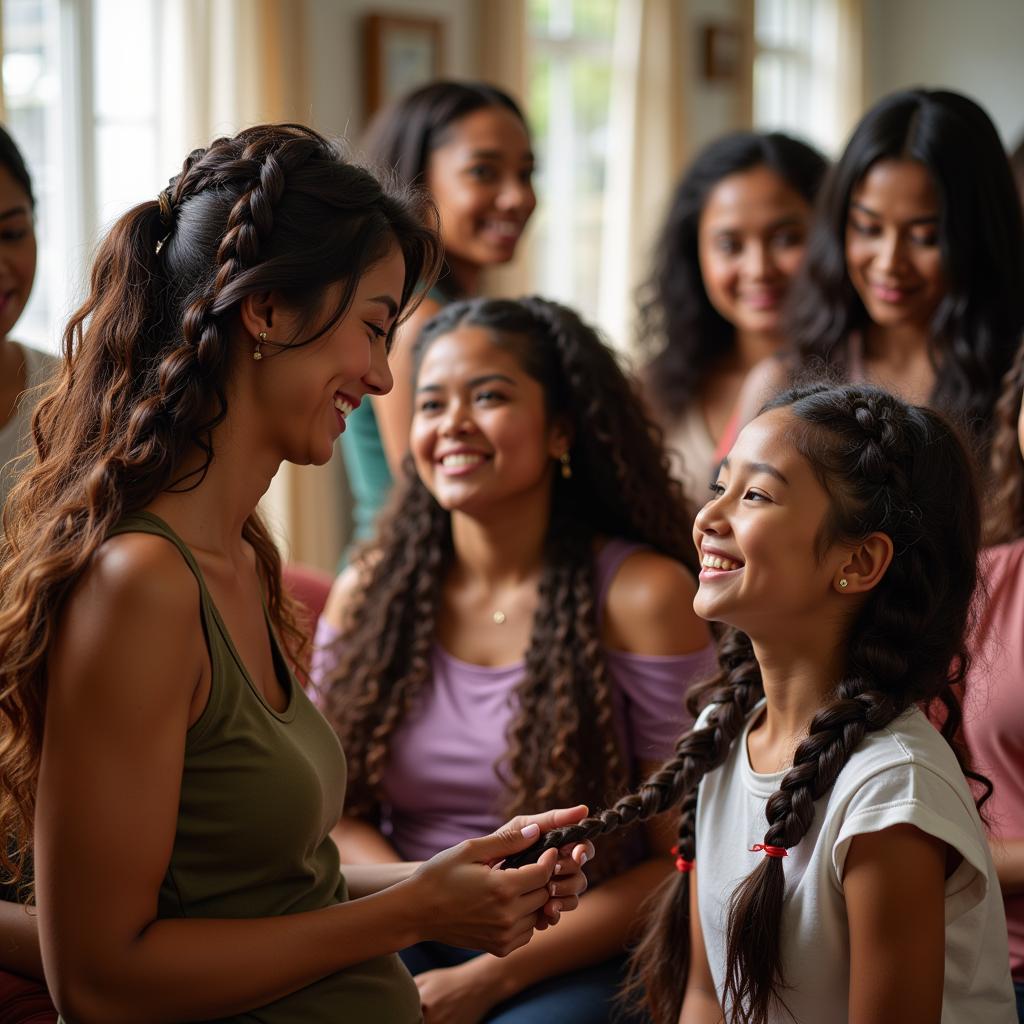 African Hair Braiding as a Social Activity in 2012
African Hair Braiding as a Social Activity in 2012
African Hair Braiding Styles 2012: A Legacy of Style
Looking back at African hair braiding styles in 2012 reveals a period of innovation and cultural celebration. These styles continue to inspire and influence contemporary braiding trends. From the intricate details of micro braids to the timeless elegance of cornrows, the braiding styles of 2012 represent a rich legacy of artistry and cultural expression.
In conclusion, African hair braiding styles in 2012 were a vibrant tapestry of tradition and innovation. They celebrated cultural heritage and provided a platform for individual self-expression. From micro braids to cornrows, these styles offered a diverse range of options, ensuring that there was a perfect braid for everyone.
FAQ
- What were the most popular braiding styles in 2012? Micro braids, tree braids, and cornrows were extremely popular in 2012.
- What is the cultural significance of African hair braiding? Braiding is an art form passed down through generations, reflecting identity and cultural heritage.
- Are these styles still relevant today? Yes, the styles of 2012 continue to inspire contemporary braiding trends.
- What are the benefits of braiding? Braids offer protection, versatility, and low-maintenance styling.
- How long do braids typically last? Depending on the style and maintenance, braids can last several weeks or even months.
- Where can I find a stylist specializing in African hair braiding? Many salons specialize in African hair braiding. You can also find stylists through online directories and recommendations.
- What products should I use to maintain my braids? Moisturizing oils and braid sprays are essential for keeping braids healthy and looking their best.
You might also be interested in our articles on:
- The History of African Hair Braiding
- Caring for Your Braids: Tips and Tricks
- Modern Braiding Trends
Need assistance with your hair braiding journey? Contact us! Phone: +255768904061, Email: kaka.mag@gmail.com or visit us at Mbarali DC Mawindi, Kangaga, Tanzania. Our customer care team is available 24/7.
